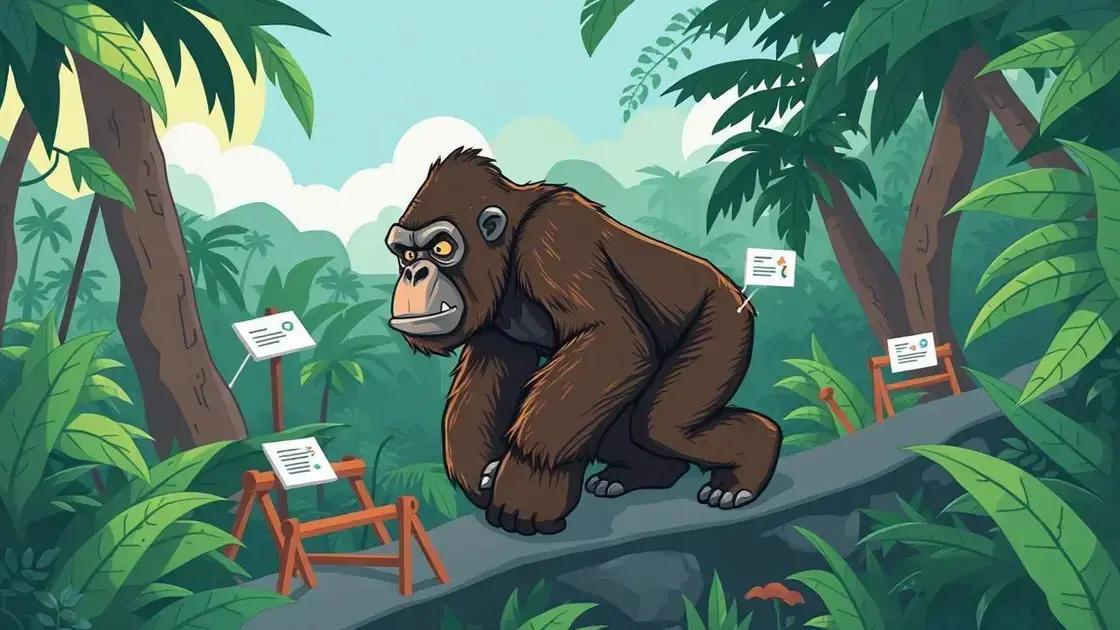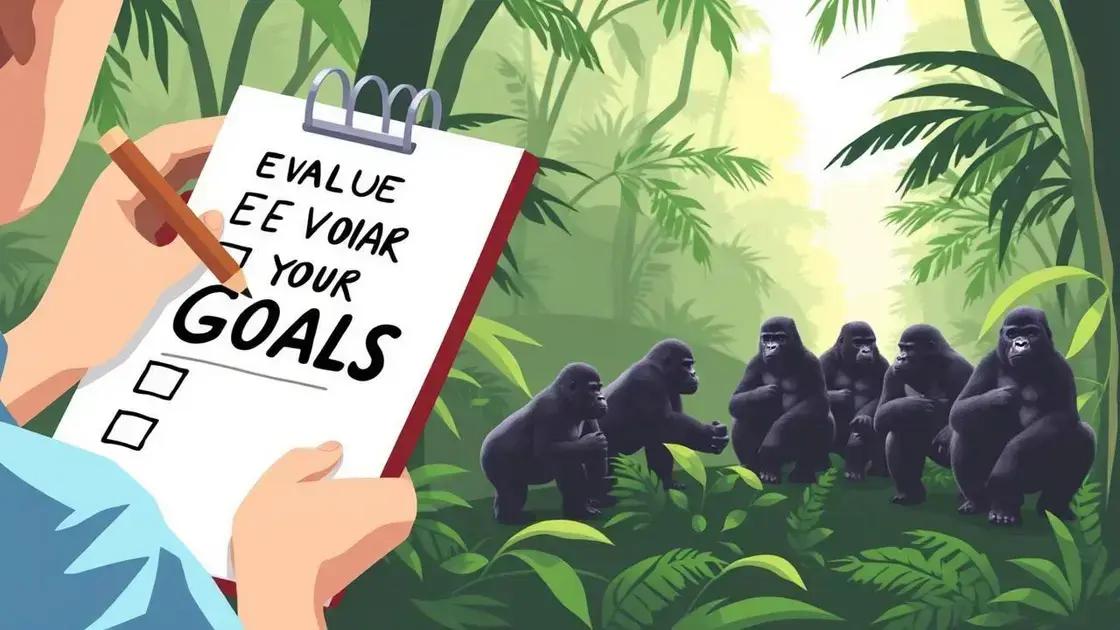The Gorilla Trick is a focus-enhancing technique that helps manage distractions by visualizing tasks as gorillas overcoming obstacles. To determine if it’s right for you, evaluate your goals, test the method with small tasks, and adjust it to fit your personal style for improved decision-making and productivity.
Are you wondering how to know if the Gorilla Trick is right for you? This unique approach has gained popularity for its effectiveness in enhancing personal strategies. In this article, we will guide you through understanding the Gorilla Trick, evaluating your own goals, and determining if it truly aligns with your needs. Prepare to explore the possibilities and make an informed decision regarding this technique.
Understanding the Gorilla Trick

Understanding the Gorilla Trick is essential before deciding if it’s right for you. The Gorilla Trick is a technique that helps individuals improve their focus and decision-making skills. It encourages the use of clear, actionable strategies to manage tasks and prioritize responsibilities effectively.
What Is the Gorilla Trick?
The Gorilla Trick involves visualizing your tasks as a gorilla making its way through the jungle. This imagery helps you recognize distractions and stay on the path toward your goals. By treating each task as a gorilla navigating through potential obstacles, you’ll find it easier to eliminate distractions that could hinder your progress.
How It Works
This technique encourages you to break down large projects into smaller, manageable parts. When you visualize each of these parts as a gorilla, you create a mental image that represents the effort needed to overcome obstacles. This makes tasks feel less overwhelming and helps maintain clarity in your efforts.
The Psychological Impact
Utilizing the Gorilla Trick can also improve your mental resilience. Seeing each hurdle as a challenge rather than a setback fosters a positive mindset. This method keeps you motivated by celebrating small victories as each gorilla tackles its task successfully, leading to increased confidence and focus.
Evaluating Your Goals

Evaluating your goals is a crucial step in determining if the Gorilla Trick is suitable for you. Setting clear goals helps guide your actions and ensures you remain focused on what’s important. To start, consider what you want to achieve.
Identifying Your Primary Objectives
Begin by writing down your primary objectives. Are you looking to improve productivity, manage time better, or enhance decision-making skills? Pinpointing your main goals will help you see if the Gorilla Trick aligns with your desires.
Breaking Goals Into Smaller Steps
Once you have your objectives outlined, break them down into smaller, actionable steps. This makes it easier to track your progress. Using the Gorilla Trick, envision each step as a gorilla tackling a specific task in its path. This enables you to stay on track and highlights any distractions that may arise.
Regularly Reviewing Your Progress
Set aside time to regularly review your goals. Ask yourself if your actions are leading you closer to achieving them. If you find that the Gorilla Trick is helping maintain your focus and productivity, it may be the right choice for you.
Making the Right Choice for You

Making the right choice for you involves carefully assessing how the Gorilla Trick can fit into your life. It is important to consider your personal and professional needs before implementing any new technique.
Aligning the Trick with Your Lifestyle
Think about your daily routines and how often you face distractions. The Gorilla Trick is effective for individuals who struggle to maintain focus amidst multiple tasks. Ask yourself: does this method complement the way you work and live? If yes, it might be worth trying.
Testing the Technique
Before fully committing, try applying the Gorilla Trick on a small scale. Start with one or two tasks and see how it impacts your productivity. Monitoring its effectiveness over a short period can give you insights into whether it suits your workflow.
Seeking Feedback and Adjusting
As you experiment with the Gorilla Trick, don’t hesitate to seek feedback from peers or mentors. Their perspectives can offer valuable insights. Additionally, be open to adjusting the technique to fit your personal preferences so that you can maximize its benefits.
In Summary: Finding the Right Fit with the Gorilla Trick
Understanding and evaluating the Gorilla Trick can provide you with valuable tools for improved focus and productivity. By aligning your goals with this technique, you can decide if it’s the right choice for your personal and professional growth.
Testing the technique on a small scale ensures it complements your lifestyle, while seeking feedback allows for adjustments along the way. Ultimately, the Gorilla Trick can help you navigate distractions and enhance your decision-making skills.
So, as you explore this method, remember that self-awareness and flexibility are key to maximizing its potential.
FAQ – Frequently Asked Questions about the Gorilla Trick
What is the Gorilla Trick?
The Gorilla Trick is a method for enhancing focus and productivity by visualizing tasks as gorillas navigating obstacles, helping you manage distractions.
How do I know if the Gorilla Trick is right for me?
Evaluate your daily routines and goals. If you struggle with focus and distractions, this technique may suit your needs.
Can I test the Gorilla Trick before fully committing?
Yes, start by applying the technique to a few tasks to see how it improves your productivity before fully integrating it into your routine.
How can I adjust the Gorilla Trick for my personal style?
Feel free to modify the visualization or steps according to your preferences to ensure it aligns with how you work best.
Is feedback important while using the Gorilla Trick?
Absolutely. Gathering feedback from peers can help you refine your approach and better understand how this technique impacts your workflow.
How does the Gorilla Trick improve decision-making?
By reducing distractions and enhancing focus, the Gorilla Trick allows you to make clearer and more informed decisions.












